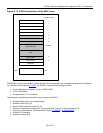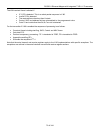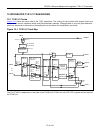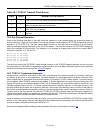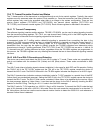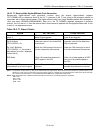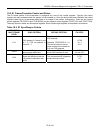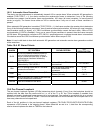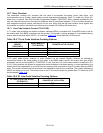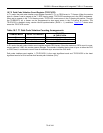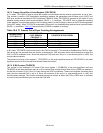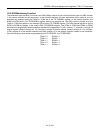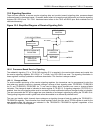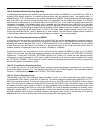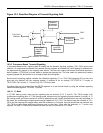
DS33R11 Ethernet Mapper with Integrated T1/E1/J1 Transceiver
77 of 344
10.5.1 Automatic Alarm Generation
The device can be programmed to automatically transmit AIS or remote alarm. When automatic AIS generation is
enabled (TR.E1TCR2.1 = 1), the device monitors the receive-side framer to determine if any of the following
conditions are present: loss-of-receive frame synchronization, AIS alarm (all ones) reception, or loss-of-receive
carrier (or signal). The framer forces either an AIS or remote alarm if any one or more of these conditions is
present.
When automatic RAI generation is enabled (TR.E1TCR2.0 = 1), the framer monitors the receive side to determine
if any of the following conditions are present: loss-of-receive-frame synchronization, AIS alarm (all ones) reception,
loss-of-receive carrier (or signal), or if CRC4 multiframe synchronization cannot be found within 128ms of FAS
synchronization (if CRC4 is enabled). If any one or more of these conditions is present, then the framer transmits
an RAI alarm. RAI generation conforms to ETS 300 011 specifications and a constant remote alarm is transmitted
if the device cannot find CRC4 multiframe synchronization within 400ms as per G.706.
Note: It is an invalid state to have both automatic AIS generation and automatic remote alarm generation enabled
at the same time.
Table 10-4. E1 Alarm Criteria
ALARM SET CRITERIA CLEAR CRITERIA
ITU
SPECIFICATION
RLOS
An RLOS condition exists on power-up
prior to initial synchronization, when a
resync criteria has been met, or when a
manual resync has been initiated by
TR.E1RCR1.0
RCL
255 or 2048 consecutive 0s received as
determined by TR.E1RCR2.0
At least 32 1s in 255-bit times
are received
G.775/G.962
RRA
Bit 3 of nonalign frame set to 1 for three
consecutive occasions
Bit 3 of nonalign frame set to
0 for three consecutive
occasions
O.162
2.1.4
RUA1
Fewer than three 0s in two frames (512
bits)
More than two 0s in two
frames (512 bits)
O.162
1.6.1.2
RDMA
Bit 6 of time slot 16 in frame 0 has been set
for two consecutive multiframes
V52LNK Two out of three Sa7 bits are 0 G.965
10.6 Per-Channel Loopback
The per-channel loopback registers (PCLRs) determine which channels (if any) from the backplane should be
replaced with the data from the receive side or, i.e., off of the T1 or E1 line. If this loopback is enabled, then
transmit and receive clocks and frame syncs must be synchronized. One method to accomplish this is to connect
RCLKO to TCLKT and RFSYNC to TSYNC. There are no restrictions on which channels can be looped back or on
how many channels can be looped back.
Each of the bit positions in the per-channel loopback registers (TR.PCLR1/TR.PCLR2/TR.PCLR3/TR.PCLR4)
represents a DS0 channel in the outgoing frame. When these bits are set to a 1, data from the corresponding
receive channel replaces the data on TSERI for that channel.



